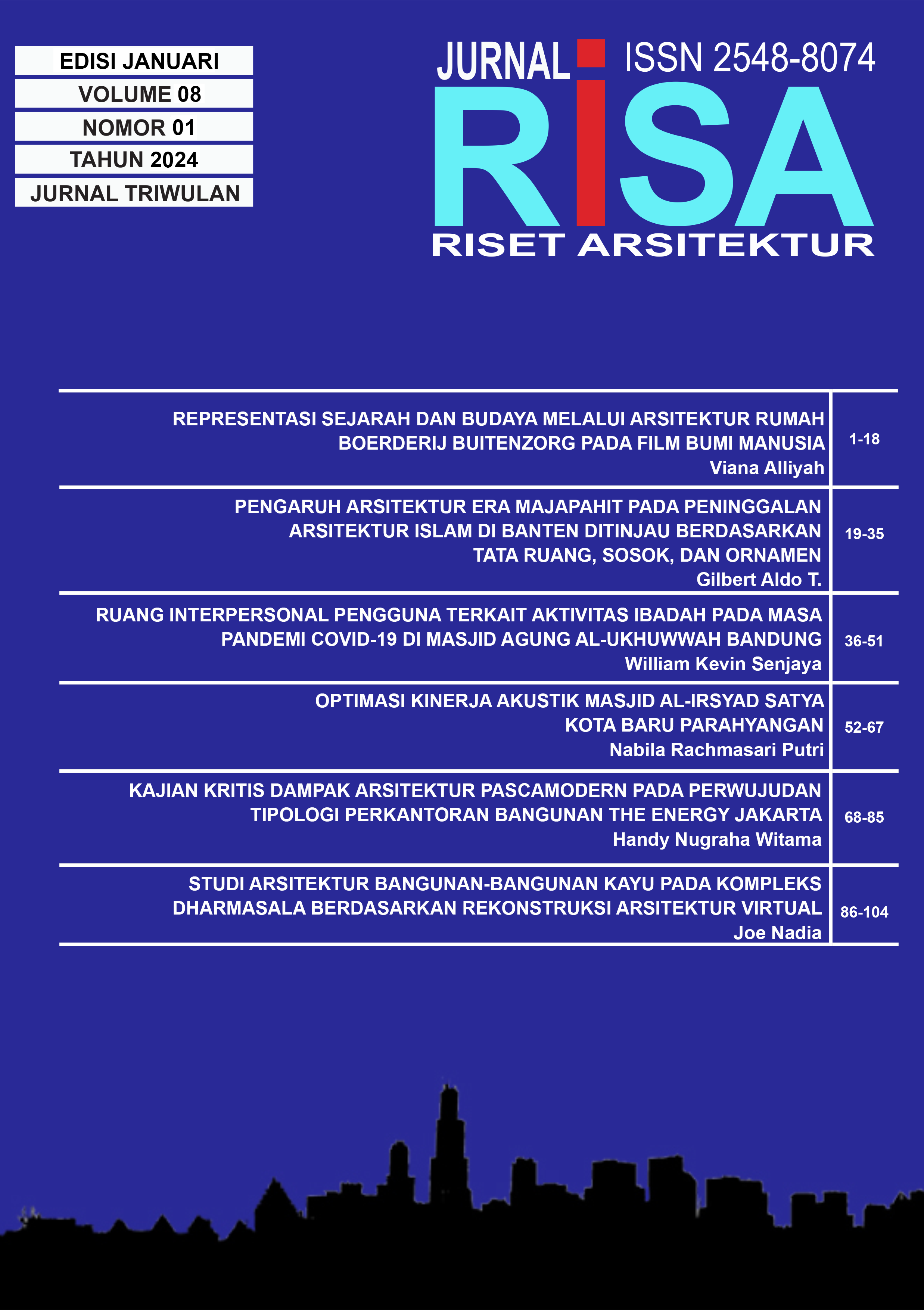REPRESENTATION OF HISTORY AND CULTURE THROUGH THE ARCHITECTURE OF BOERDERIJ BUITENZORG HOUSE IN BUMI MANUSIA FILM
DOI:
https://doi.org/10.26593/risa.v8i01.7534.1-18Abstract
Abstract - Architecture and Film are two different things but are interrelated and need each other. A film product will certainly not be completed without the role of architecture as a backdrop. Film represents space and time where this medium has a temporal spatial nature from cinematic representations that can be observed through architecture to the characters and events depicted. In addition, the architecture in the film is able to create an environment that brings the audience to a certain period. Films may provide a description of the social and cultural life of a community at a certain time, even the architectural forms and styles used. The film Bumi Manusia (2019) is an adaptation of the legendary novel of the same title which uses the architectural setting of the Dutch colonial era. This film uses space and architectural elements in a cinematic way, especially the Boerderij Buitenzorg house which is the dominant location in the film. In this way, the film Bumi Manusia (2019) can represent history and culture through the architecture of the Boerderij Buitenzorg house and perhaps in influencing the audience's perception of the historical period.
The study used qualitative methods with descriptive methods, namely taking data on the object study descriptively and qualitatively analyzing it. The purpose of this study was to identify the elements of the cinematic space in the Boerderij Buitenzorg house. Elements of space can be analyzed using cinematic space tectonic theory through mise-en-scène (cine-spatial) and cinematography. Then identify the characteristics of Dutch colonial architecture on the spatial elements and building facades. Through the analysis of the characteristics of the Boerderij Buitenzorg house, the spatial elements and the building facade in this house do not fully represent the architecture of the Dutch colonial period. Through elements that represent and do not represent Dutch colonial architecture, the film Bumi Manusia (2019) as a film that depicts a historical period, can represent, manipulate, and change the audience's perception of the architectural environment in the Dutch colonial period.
Keywords: Cinema and Architecture, The House of Boerderij Buitenzorg, Bumi Manusia Film (2019), Cinematic Architecture, Characteristics of Dutch Colonial Architecture.
Additional Files
Published
Issue
Section
License
Copyright (c) 2024 Viana Aliyyah

This work is licensed under a Creative Commons Attribution-NonCommercial-ShareAlike 4.0 International License.












